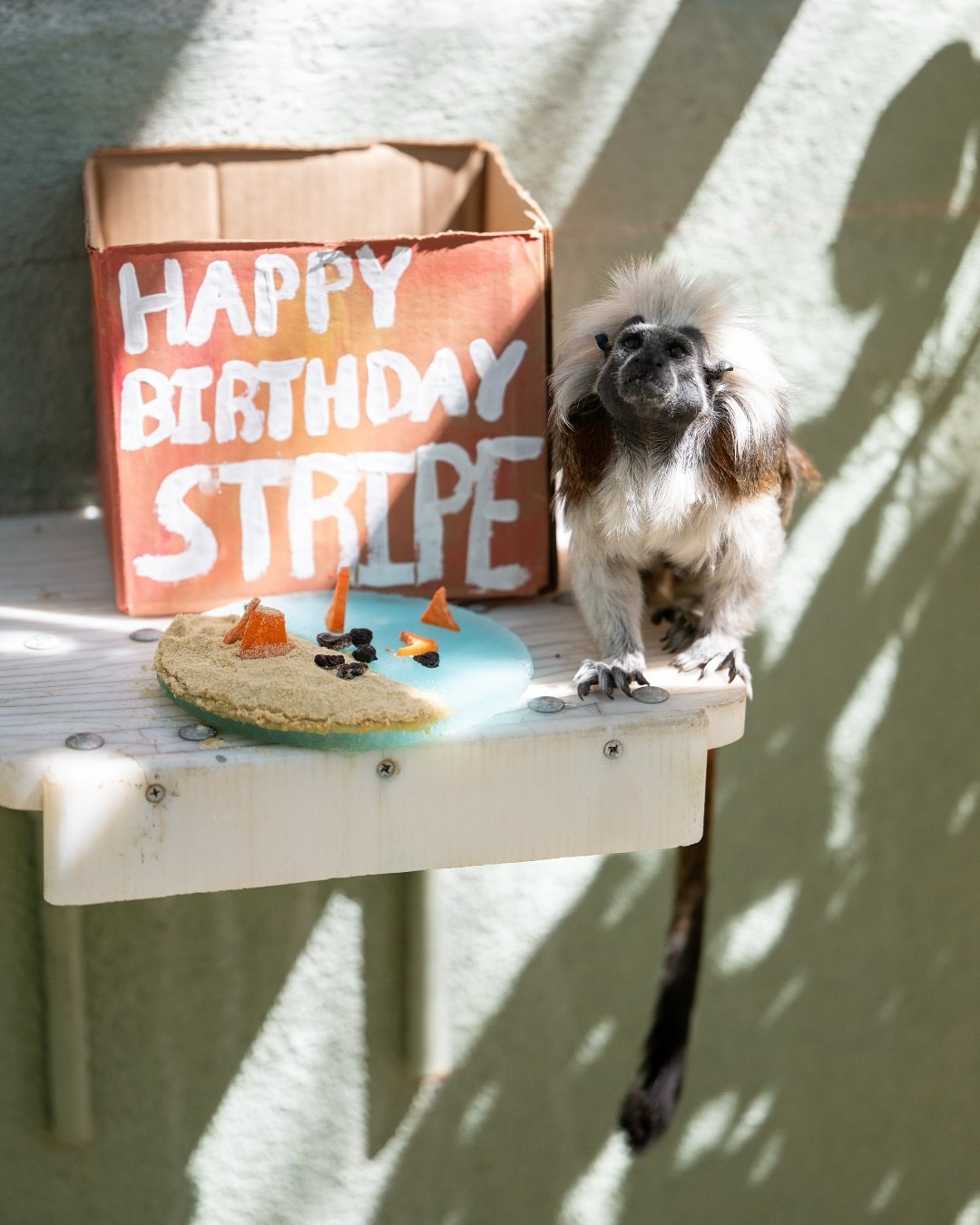- An introduction to Stripe, the cotton-top tamarin, and his 11th birthday celebration.
- Distinctive characteristics of cotton-top tamarins and the role of such traits in their identification and conservation.
- Insights into zoo management practices focusing on tamarin care, genetics, and enrichment.
- The significance of birthday celebrations in zoos for animal welfare and public engagement.
- Conservation efforts aimed at protecting cotton-top tamarins in the wild and their impact on biodiversity.
Stripe, a male cotton-top tamarin, just celebrated a milestone—his 11th birthday. Known for their lively presence and social behavior, cotton-top tamarins are small primates native to the dense forests of northwestern Colombia. Stripe’s specific marking, a uniquely curved tail, sets him apart from his daughter, Marimonda, and is a key identifier akin to a fingerprint in humans. This physical distinction is crucial not just for identification but also for maintaining accurate records of lineage and breeding within zoos, supporting the broader conservation goals for these endangered animals.
Cotton-top tamarins are known for their distinctive appearance. Their white manes, which look like cotton balls, earned them their name. These animals are small, weighing approximately one pound, but their agile movements and complex vocalizations underscore their significant intelligence. These features are not merely anecdotal; they play a critical role in survival and social interaction. The curved tail, as seen in Stripe, is one of the many adaptations that aid in agility and balance as they maneuver through the forest canopy. Understanding these morphological and behavioral traits is vital for both zoo caretakers and conservationists.
In managing these unique creatures, zoos adopt comprehensive strategies to replicate their natural habitat as closely as possible. Providing a rich environment involves more than just meeting the species’ basic needs—it’s about stimulating their instinctual behavior to promote well-being and reduce stress. This is achieved through dynamic habitats that include climbing structures, varied plant life, and enrichment activities that encourage natural behaviors like foraging and exploration. Stripe enjoys these activities, which are crucial for maintaining both physical health and mental stimulation, ensuring a better quality of life in a captive environment.
Marking milestones like birthdays also holds significant importance in zoos. Celebrations serve a dual purpose: enhancing animal welfare and facilitating public engagement. On Stripe’s birthday, zookeepers might offer special treats that stimulate his interest, such as a fruit puzzle or a favorite food hidden in a novel way. These activities are enjoyable for the tamarins and educational for the visiting public. By actively engaging visitors through such occasions, zoos emphasize the real-life conservation stories behind these animals, nurturing an appreciation that motivates conservation advocacy.
The conservation narrative is deeply interwoven with the story of Stripe and cotton-top tamarins. Their habitat in the wild is imperiled due to deforestation and fragmentation, predominantly from agricultural expansion. This habitat loss, coupled with illegal pet trade pressures, has rendered cotton-top tamarins critically endangered. However, concerted conservation efforts, both in captivity and in the wild, are underway to reverse this trend. Collaboration between international organizations, local communities, and zoological institutions is essential. Captive breeding programs, like those Stripe is a part of, are fundamental to diversifying the genetic pool and ensuring the species’ survival.
Moreover, conservation initiatives often involve habitat restoration projects that benefit entire ecosystems. Protecting tamarin habitats aids more than just tamarins—it supports numerous plant and animal species within the same environment, promoting overall biodiversity. These conservation actions reflect a broader commitment to environmental stewardship, drawing a clear link between individual zoo animals like Stripe and larger ecosystem health. Public awareness campaigns, driven by zoos and conservation groups, play a vital role in these efforts, transforming local and global appreciation into actionable support for conservation projects.
Stripe’s story is more than a solitary celebration. His birthday serves as a reminder of the intricate balance required to maintain biodiversity, even within zoological setups that mimic nature. By understanding and celebrating the individuality of animals like Stripe, and by investing in their conservation, the broader goal of preserving our planet’s diverse ecosystems comes into clearer focus. As zoos continue to innovate and educate, they remain pivotal allies in wildlife conservation, ensuring that animals like the cotton-top tamarin continue to thrive both in captivity and in their natural habitats.
*****
Source Description
Cheers to 11 years! 🥳
Stripe, our male cotton-top tamarin, celebrated his birthday this week! Fun fact – you can identify Stripe apart from his daughter, Marimonda, by looking for his curved tail.


